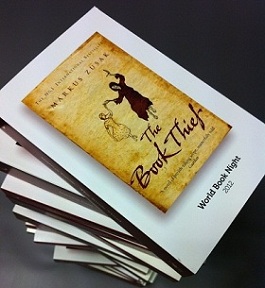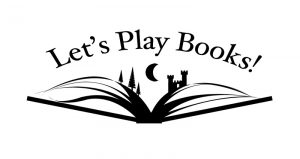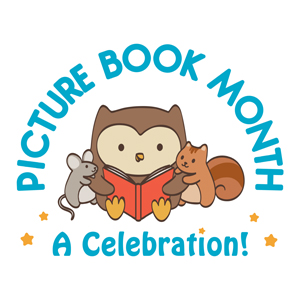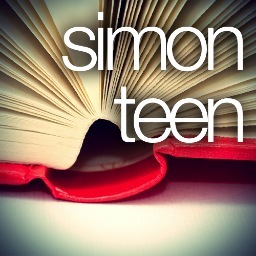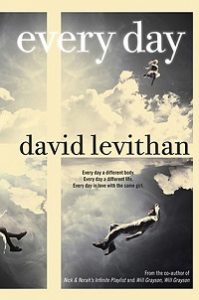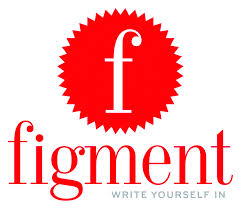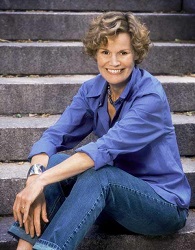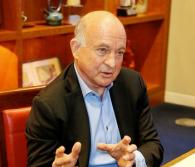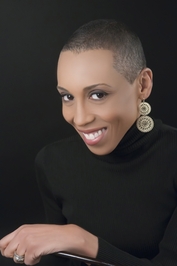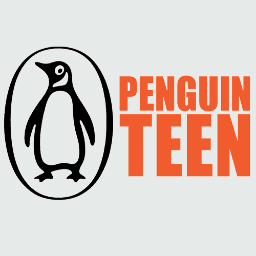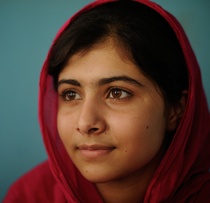Blog
-
Reading in a Digital Age: Paper May Trump Screens in Reading Comprehension and Retention for Young Readers
“Even preliminary research suggests that so-called digital natives (those raised with digital media) are more likely to recall the gist of a story when they read it on paper because …
-
Eight Children’s Books to Be Given Away on World Book Night 2014
This year’s “list includes the first graphic novel, first university press title and first Asian-American authors. As before, one book is in English and Spanish, and two are available in …
-
New Children’s Bookstore, Let’s Play Books!, to Open in Emmaus, PA
On the store’s Facebook page, owner Kirsten Yauch Hess — previously marketing and events manager at R.J. Julia Booksellers in Madison, CT — explains that the bookstore aims to: “Through …
-
Celebrate Picture Book Month All November Long!
FOR IMMEDIATE RELEASE November 2013 is Picture Book Month “Introducing them at a young age to the imaginary world of literature can plant the seed for a lifetime of exploration …
-
CBC Diversity Newsletter: November 2013 v.1
Click to view CBC Diversity Newsletter November v. 1 on GLOSSI.COM
-
Are Ebook Subscription Services Viable?
“All the evidence suggests that consumers love subscription content models — it’s the original model of magazines and newspapers and cable, and now it’s the power behind Netflix. I believe …
-
Children’s Book Authors & Illustrators Protest Excessive Standardized Testing
An excerpt: “This year has seen a growing national wave of protest against testing overuse and abuse. As the authors and illustrators of books for children, we feel a special …
-
New Imprint to be Established at Simon & Schuster Children’s Books
“Anderson expects to publish 12 to 15 hardcovers annually starting in spring 2015, although he said he hoped to be able to release a few titles by fall 2014. In …
-
‘Endangered’ Author Eliot Schrefer’s Take on Writing for Adults vs. Writing for Teens
Excerpts from Schrefer’s article: “I’ll admit that at first my new career smarted — the “young” in Y.A. felt like the “junior” in J.V. — though at the same time, …
-
David Levithan to Pen ‘Every Day’ Companion Novel
This new book will be told from the perspective of the title character. Originally, Rhiannon is introduced as the love interest of A who narrates the story in ‘Every Day.’ …
-
Just Launched: Writer’s Success Academy, Founded by Award-Winning Author Alan Sitomer
Sitomer, himself published by Disney, Scholastic, Penguin and more, says: “Since so many aspiring writers seek advice on how to break in, how to get an agent, how to write …
-
Random House Children’s Acquires Figment, Online Teen Community for Readers and Writers
FOR IMMEDIATE RELEASE RANDOM HOUSE CHILDREN’S BOOKS ACQUIRES FIGMENT, ONLINE TEEN COMMUNITY FOR READERS AND WRITERS New York, NY, October 29, 2013—Random House Children’s Books has acquired Figment, an …
-
Judy Blume Wins the 2013 NAIBA Legacy Award
“In 2004, the New Atlantic Independent Booksellers Association established a Legacy Award in recognition of those individuals whose body of work contributed significantly to the realm of American arts and …
-
Scholastic President Discusses Educational Text — From Book Fairs to Digital Technology
When asked about whether this change would require a technology partnership, Mr. Robinson replied: “We have any technology we want available to us. We know all the people in the …
-
CBC Diversity: Keeping Diamonds
Let’s face it. There are still not enough people of color working in publishing houses. There have been some great efforts to hire newcomers into the fold, but in recent years I’ve taken notice of how many diversity hires don’t stay in their jobs. When I hear of a young person who’s left a publishing house to pursue a career in a different industry, I ask them why they’ve left. I often get the same answer. It has little to do with the low salaries in publishing. (Oftentimes these people are passionate about publishing and are willing to start out with a publishing salary, in the hope that they’ll eventually earn more through career development and advancement.)
Fortunately, I work in an environment where attention to hiring and retention of diverse talent is paramount and core to the culture. But in my observations across the industry, bright newcomers tell me that while they were happily welcomed into the fold, they often felt isolated and directionless once they got in their jobs. I hear it over and over again ― these up-and-coming talents tell me they didn’t fully succeed in their roles because it was hard to find mentors within the company who would groom them, show them the ropes, help them figure out the subtle political and social cues that exist in any workplace.
They say that, as people who are often newly out of college, it wasn’t easy to assert themselves when issues of race were discussed in meetings. When well-meaning people made inappropriate race-related comments that nobody else considered offensive. When a question came up at a meeting about whether or not to depict a face of color on a book jacket (as this is sometimes perceived as a detriment to sales), or when a person of color on a cover is shown from behind or only depicted through body parts like feet. When this employee had an idea for how to market a book through grassroots efforts that involved having to push for promoting it through, say, the black church or the NAACP, and having these ideas fall on deaf ears.
After just a few months of not being validated, or having to swallow subtle slights, new hires begin to think that publishing is an unfriendly place to be. That’s when we lose some of the brightest young people to jobs in television, magazines, advertising, and other media.
Imagine finding a beautiful and promising flower that you know has tremendous potential to grow into a something wholly unique that will gladden the world, but then not taking the extra time needed to nurture that flower. To give it the special soil that it needs. To check on its progress. To find out why it’s not thriving when its leaves and petals start to wither. Or, similarly, think of a diamond-in-the-rough. You hire a person based on a glimmer of brilliance you know is there, but don’t ever take the time to polish that diamond. The same is true of the diversity candidates we bring into publishing jobs. We need to take the extra time needed to help them grow ― and to show them how they can shine their brightest! These people are definitely capable enough to handle their duties (after all, you hired them based on their credentials), but they sometimes need just a little more support, for the simple reason that, each and every day, they are working in an environment where they are the only one, or among very few who look like them. This can be daunting.
There have been many conversations about hiring, hiring, hiring. And so, we hire. And we pat ourselves on the back. But just as important as hiring is retaining the talent we’ve hired. This carries as much importance as employing someone.
Here are some strategies for keeping the diamonds we bring in-house so that companies can become glittering ― and growing ― treasure troves of diverse talent.
- Put yourself in their shoes. Every now and then take a moment to imagine being the only one like you in a setting, all the time. During a meeting, take a moment to look around the room, and to note how diverse a setting it is (or isn’t) and what that must feel like for someone in the minority, every single day.
- Set the stage. Upon hiring, let the individual know that you’re available when issues arise, and that you’re here to help them grow into their role ― and to succeed.
- Go the extra mile. We all get busy with deadlines and commitments. But to retain any candidate and to foster career development, it’s vital to provide direction by taking time to show that person the ropes, each and every day.
- Get off-campus. At least three times a year, take your candidate out of the office, just to schmooze. Have lunch. Go for coffee. Some of the best conversations happen when we can all let our hair down a bit. As soon as you make a hire, let the person know that this is something you do, and that you look forward to these opportunities to have a more casual interaction, away from phones and email.
- Coach, guide, mentor. These three words are essential, and must be practiced on an ongoing basis. When you hire someone, show them more than where the local Starbucks is and how to find the ladies room. Point them toward ways to advance their knowledge of the field and their careers. Also, day-to-day, when you see interactions or opportunities for growth, help the person discern how best to approach these situations in the future. Give them the dialogue they need, and the ways to craft an email or express an idea.
- Speak up. Don’t shy away from discussions about race or ethnicity if these come up in meetings. Show that you’ve created an atmosphere of open and unhindered communication.
- Ask their opinions. Involve diversity candidates in meetings and discussions that involve diversity issues. Ask them what they think about book covers, ways to promote books to relevant markets, organizations that can help position a title. And listen to what they tell you.
- Put them into the game. Using a sports analogy, give your new hire every opportunity to “play” on the field. Don’t keep them on the sidelines.
- Build alliances. Look for ways to help this person make contacts and to network with others in the field, i.e., find out what kinds of panels, forums, and seminars might be of interest. For example, the CBC Diversity Initiative.
- Promote networking. Find out where other diversity candidates are working and seek ways to make introductions among these people. A simple e-introduction letting people know they may like to meet each other can go a long way.
-
Twentieth Century Fox Delays Theatrical Release of ‘The Maze Runner’ Movie
Dylan O’Brien, one of the actors on the cast, shared these thoughts about the postponement: “I mean, we wrapped in July, and having it release in February, a big action …
-
Scholastic Gets Goosebumps for R.L. Stine’s Spooky Social Media Takeover
New York, NY – October 28, 2013 – Goosebumps fans, prepare to be spooked silly during R.L. Stine’s Spooky Social Media Takeover! R.L. Stine, bestselling author of the Goosebumps® series, will host …
-
DIVERGENT Producer Lands 2-Book Deal for New Young Adult Sci-Fi series
G.P. Putnam’s Sons Books for Young Readers, a subsidiary of big five publisher Penguin Random House, signed DIVERGENT producer Pouya Shahbazian and co-author Sarah Fine to a two-book, six-figure deal for an …
-
Darkness Should Be Visible: Robin Wasserman on How “Stephen King Saved [Her] Life”
Wasserman makes the point, contested and defended a few times in recent years, that darkness in children’s books is not only valuable, but necessary. She argues that Stephen King’s adult books …
-
Malala Yousafzai, International Advocate for Education, to Pen Young Readers Edition of Her Remarkable Story
NEW YORK–Megan Tingley, Executive Vice President and Publisher, Little, Brown Books for Young Readers, announced today that Malala Yousafzai will share her remarkable story with young readers ages ten and …


